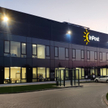What has been going on in the railway industry in recent years and what are the investment plans for the coming period?
In 2016, the railway stopped closing up and started opening up again. There were 24.5 thousand km of active railway lines thirty years ago as compared to 18.5 thousand in 2016. Today, we have 19.3 thousand railway lines, which means that we have restored 800 km to service. We are improving the parameters of the lines so that trains can travel at 160 km/h and more. We are modernising rail connections between major cities to handle speeds of 160–200 km/h, which results in shorter journey times. For example, a train travels 2.5 hours from Warszawa to Gdańsk (almost 400 km). Other benefits include the expected comfort of travel and hundreds of more accessible railway stations. It was also possible to restore trains on various lines that have been closed for years, such as Legnica-Rudna Gwizdanów, Lublin-Łuków, Mielec-Dębica, or Wrocław-to Jelcz via Wrocław Swojczyce. A higher level of safety is provided by new collision-free crossings, modernised level crossings, and state-of-the-art equipment.
In the coming years, we will continue the expansion of the Polish railways, especially in terms of adapting the infrastructure to the requirements of the TEN-T core network, full electrification of individual railway lines included in the TEN-T core network corridors, adapting the infrastructure to run goods trains at a speed of 100 km/h, and implementing the ERTMS/ETCS system. Projects are also planned to improve capacity in urban agglomerations by extending agglomeration inputs to include four tracks to separate suburban, long-distance, and freight traffic. We should not forget about the government’s rail programmes that will improve access to rail, either; i.e. the Rail Plus Programme and the government’s programme for the construction or upgrade of railway stations 2021–2025.
Czytaj więcej
The aim is to achieve a commercial speed of over 40 km/h, says Ireneusz Merchel, President of PKP...
What about the carriage of goods?
We are modernising the main freight railway routes: north-south and east-west. We are now focusing on the north-south routes from Silesia to the ports of Gdańsk, Gdynia, Szczecin, and Świnoujście. In the last three years, we have completed work on the port access station in Gdańsk. The number of tracks has increased from 12 to 25. We have doubled the transport capacity. We are in the final stages at the ports of Gdynia, Szczecin, and Świnoujście. The work will be completed by mid-2023. Access to the ports has been a bottleneck.



























